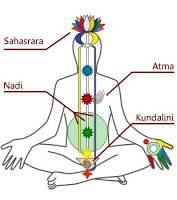First Publication Date: 9th June 2010
The Council for Scientific and Industrial Research (CSIR) has recently incorporated materials on yoga to the Traditional Knowledge Digital Library (TKDL). The materials include data on various yoga postures and videos relating to them. The information on yoga has been collected by CSIR from ancient Indian texts such as Patanjali. As per Dr. Gupta from CSIR, the addition of the materials to TKDL will play an important role in preventing patent grants relating to yoga in the USA, Europe and other countries.
The efforts of CSIR raise the question of whether yoga postures and processes can actually be patented? The answer to this question is not straight forward and varies based on the law of the country. While many yoga processes would be patentable in the USA, all of them may not be patentable in India and Europe. One roadblock to patentability of a method of performing yoga would be the involvement of the human mind. Generally, a patent would not be granted if processing data or information in the human mind forms part of a process. Most yoga procedures require the application of the mind and therefore, may not merit patent grant.
Assuming that it falls outside the scope of prior art, can a yoga method be patentable in India? In my opinion, the answer to the question is ‘Yes’. Unless the process is aimed at treating a disease or disorder, a method of performing would be patentable. To elucidate this further, I would like to take a patent application filed in Korea as an example. The application provides in its translated abstract as follows:
English Abstract:
Purpose
A method of Yoga for a baby is provided to give various stimuli to the baby through reciprocal action by touching, patting and holding the baby.
Constitution
The method of Yoga for a baby is to move the baby’s legs in the direction of the rib of the baby by turns and stretch baby’s legs in the direction of its mother. Also, the method is characterized by moving the baby’s legs as if they are pedaling a bicycle. The method is to bend and gather baby’s legs and rotate baby’s legs like drawing a circle in the left and right directions by turns. In the beginning, one moves the baby’s legs in a small circle, and later moves the baby’s legs in a big circle.
(KR1020050043565A 2005-05-11 – METHOD OF YOGA FOR BABY TO GIVE VARIOUS STIMULI TO BABY THROUGH INTERACTION BY TOUCHING, PATTING AND HOLDING BABY)
The patent relates to a method of giving stimuli to a baby through various steps. The steps include stretching, pedaling, rotating the legs of the baby and so on. The patent is aimed at providing stimulus and not aimed at treating a disease or disorder. Therefore, the invention falls outside the scope of non-patentable inventions and would be patentable subject matter. However, if the invention is a process of performing yoga to cure limb disorders in babies, it would not be patentable because it would then become a medical method that is a non-patentable invention.
Having said that, though the process of performing yoga as described in the Korean application would be patentable subject matter, my limited knowledge of yoga postures makes me believe that the method being described in the application would fall within the scope of prior art in India and therefore, would not satisfy the novelty and/or inventive step requirements.




0 Comments
H K Dubey
I read this article. And outrightly would like to ask:
How can anyone patent the ancient knowledge followed from one generation to another?
All the methods of yoga – whether recorded or unrecorded (I repeat “whether recorded or unrecorded”) have been given by saint/rishis of India and have been practiced in homes of India from generations.
No. Any method of performing Yoga cannot be patented. This are ancient knowledge given by our forefathers and no single entity or individual has the right to get them patented.
Regard,
Hemant Kumar Dubey
http://www.hemantdubey.com
Vishal Jain
Ancient methods of yoga cannot be patented because they fall within the scope of prior art. If you read the post carefully, Dr. Kalyan has pointed that methods of yoga would be patentable subject matter and would be patentable only if they fall outside the scope of prior art. So, either documented or not, if a method falls within the scope of prior art, in other words, if it has been already expounded by rishis or is in ancient knowledge, a method of yoga cannot be patented.